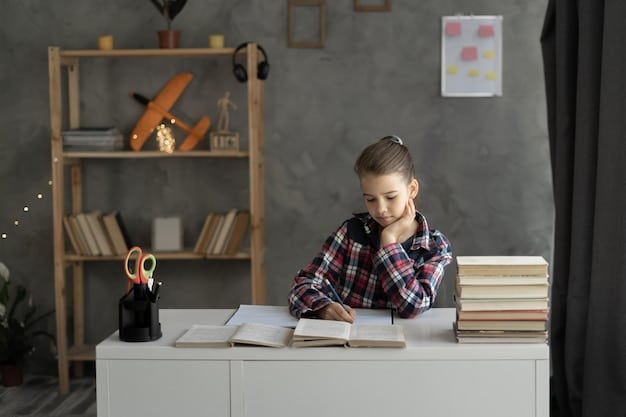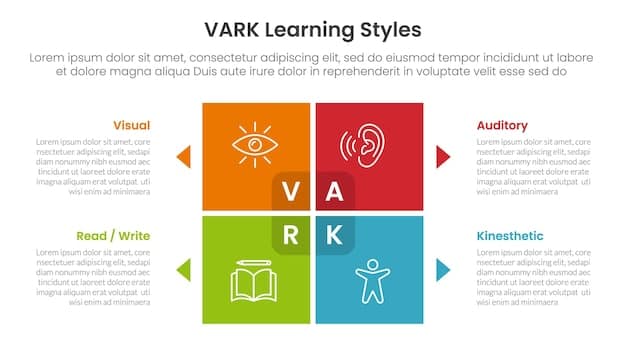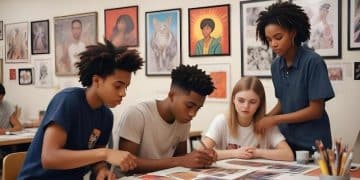Unlock Your Learning Potential: Note-Taking for Every Learning Style

Effectively combining learning styles and note-taking enhances information retention by tailoring techniques to individual preferences like visual, auditory, or kinesthetic methods, optimizing how key information is captured and recalled for better academic or professional outcomes.
Discover the synergy between learning styles and note-taking to revolutionize how you capture and retain information. Tailoring note-taking strategies to your specific learning style—whether visual, auditory, or kinesthetic—can significantly enhance your understanding and recall.
Understanding Learning Styles
Understanding learning styles is crucial for optimizing how we process and retain information. Recognizing your unique learning preferences allows you to tailor your study habits and note-taking techniques for maximum effectiveness.
Learning styles are commonly categorized into visual, auditory, reading/writing, and kinesthetic (VARK). Each style represents a different way individuals prefer to learn and absorb new information.
Visual Learners
Visual learners thrive on seeing information. They benefit from diagrams, charts, and images to understand concepts. Note-taking for visual learners should incorporate visual cues and spatial organization.
Auditory Learners
Auditory learners prefer listening to information. Lectures, discussions, and recordings are effective learning tools for them. Note-taking should focus on capturing key auditory details and keywords.

- Mind Maps: Use visual layouts to connect ideas.
- Color-Coding: Assign different colors to different topics or concepts.
- Diagrams and Charts: Translate notes into visual representations.
Visual learners excel when notes are visually stimulating and organized, making it easier to recall information through visual memory.
Note-Taking Techniques for Visual Learners
Visual learners benefit significantly from note-taking techniques that emphasize visual organization and cues. Incorporating visual elements such as diagrams, colors, and spatial arrangements can enhance information retention and recall.
Effective note-taking for visual learners should transform textual information into visual formats that are easier to process and remember.
Mind Mapping
Mind mapping is a powerful technique for visual learners. It involves creating a central idea and branching out to related topics, using lines, colors, and images to connect concepts visually.
Sketching and Doodling
Incorporating sketches and doodles into notes can help visual learners create memorable associations. These visual cues enhance understanding and recall by linking abstract concepts to concrete images.
- Use different colored pens to highlight key points.
- Draw diagrams to illustrate relationships between ideas.
- Create visual hierarchies to organize information.
By transforming notes into visually engaging formats, visual learners can leverage their strengths to improve learning outcomes.
Adapting Note-Taking for Auditory Learners
Auditory learners benefit from strategies that convert written notes into auditory formats. Listening to recordings of lectures or discussions, and then expanding on those notes, can significantly improve understanding.
Note-taking techniques for auditory learners should leverage their preference for listening to information.
Recording Lectures
Recording lectures allows auditory learners to revisit the material and reinforce their understanding. Listening to the recording while reviewing notes can enhance recall.
Verbal Summaries
Creating verbal summaries of notes helps auditory learners process information actively. Summarizing aloud and explaining concepts to oneself strengthens comprehension.

- Listen to recordings of notes while commuting or exercising.
- Discuss notes with study partners to reinforce understanding.
- Use voice-to-text software to transcribe notes and review them aurally.
By utilizing auditory techniques, auditory learners can reinforce their understanding and improve recall of key information.
Note-Taking Strategies for Reading/Writing Learners
Reading/writing learners can benefit from traditional and structured note-taking methods. Outlining, summarizing, and rewriting notes are effective ways to reinforce understanding.
These learners prefer to absorb information through reading and writing, so their note-taking should focus on these modalities.
Outlining
Creating detailed outlines helps reading/writing learners organize information logically. Using headings, subheadings, and bullet points structures notes effectively.
Summarizing
Summarizing notes into concise points helps reading/writing learners condense and reinforce key concepts. Rewriting notes in their own words enhances comprehension and recall.
- Review and rewrite notes regularly.
- Create flashcards with key terms and definitions.
- Write essays or summaries to integrate knowledge.
By focusing on structured and detailed note-taking methods, reading/writing learners can optimize their learning process.
Enhancing Learning for Kinesthetic Learners
Kinesthetic learners learn best through hands-on activities and physical experiences. Incorporating movement and tangible elements into note-taking can significantly improve their understanding.
Effective note-taking for kinesthetic learners involves engaging the body and creating physical connections to the material.
Active Recall
Active recall involves testing oneself on the material. Physical activities like walking or jogging while reviewing notes can enhance retention for kinesthetic learners.
Role-Playing
Role-playing scenarios and acting out concepts helps kinesthetic learners understand and remember information through physical engagement. It makes the learning process more interactive and memorable.
- Use physical objects to represent concepts.
- Create models or prototypes to reinforce learning.
- Take frequent breaks to move around and stay engaged.
By integrating physical activities and tactile elements into note-taking, kinesthetic learners can improve their learning.
Combining Styles for Comprehensive Learning
Combining different learning styles can lead to a more comprehensive and effective learning experience. Integrating visual, auditory, reading/writing, and kinesthetic techniques can cater to multiple learning preferences.
Adopting a multi-sensory approach can enhance understanding and retention for all types of learners.
Multi-Sensory Approach
Using a combination of visual aids, auditory recordings, written summaries, and hands-on activities can reinforce learning through multiple channels. This approach caters to diverse learning preferences.
Personalized Strategies
Experimenting with different note-taking techniques and identifying the most effective combination for individual needs can optimize the learning process. Tailoring strategies to personal strengths enhances learning outcomes.
- Integrate mind maps with verbal summaries.
- Combine sketching with active recall.
- Use role-playing to reinforce written notes.
By blending different learning styles, students can create a well-rounded approach to enhance their understanding and retention of the material.
| Key Concept | Brief Description |
|---|---|
| 🎨 Visual Learners | Benefit from diagrams, colors, and visual cues in their notes. |
| 🎧 Auditory Learners | Learn best by listening to recordings and verbalizing notes. |
| ✍️ Reading/Writing Learners | Prefer outlining and summarizing notes in a structured way. |
| 💪 Kinesthetic Learners | Engage through physical activities and hands-on experiences. |
FAQ
▼
The main learning styles include visual, auditory, reading/writing, and kinesthetic. Each style represents a different way individuals prefer to learn and absorb new information, influencing their study habits.
▼
Visual learners should use diagrams, charts, and color-coding in their notes. Mind mapping is also very effective for visually organizing information and making connections between different concepts.
▼
Auditory learners benefit from recording lectures and listening to them later. Verbalizing notes and discussing topics with peers can also enhance their understanding and retention of the material.
▼
Reading/writing learners should focus on structured outlining and summarizing their notes. Rewriting notes in their own words and creating flashcards can help them reinforce key concepts.
▼
Kinesthetic learners benefit from active recall and incorporating movement into their study sessions. Using physical objects to represent concepts and role-playing are also effective methods for them.
Conclusion
By understanding and adapting note-taking techniques to match individual learning styles, students and professionals can significantly enhance their learning and retention. Experimenting with different strategies and finding the combination that works best can lead to a more effective and enjoyable learning experience.





